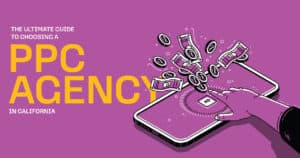In the era of smartphones and tablets, mobile advertising has emerged as a pivotal channel for marketers aiming to capture the attention of their target audience effectively. This comprehensive guide delves into the essence of mobile advertising, explores its various forms, shares practical tips for crafting winning strategies, and highlights successful examples from the industry.
Understanding Mobile Advertising
Mobile advertising encompasses a broad spectrum of ads that are specifically designed to be displayed on mobile devices, including smartphones and tablets. This form of advertising takes advantage of the mobile context to offer personalized, location-based, and highly targeted content to users, leveraging the unique characteristics of mobile devices to engage consumers in a more direct and interactive manner.
Key Types of Mobile Advertising
- In-App Ads: These ads are integrated within mobile applications, ranging from banner and interstitial ads to more immersive video and native ads. In-app advertising allows for a high level of targeting and personalization, capitalizing on user engagement within specific apps.
- Mobile Web Ads: Similar to traditional online advertising, these ads appear on websites accessed via mobile browsers. They’re optimized for the mobile experience, ensuring that they load quickly and are easily viewable on smaller screens.
- SMS/MMS Marketing: This strategy involves sending text or multimedia messages directly to users’ mobile phones. It’s a direct form of marketing that can be highly effective when used with permission-based audiences.
- Location-Based Advertising: Utilizing GPS technology, advertisers can target users based on their real-time location, offering relevant ads for local services or promotions.
- Mobile Video Ads: With the increasing consumption of video content on mobile devices, video ads offer a compelling way to capture user attention and convey messages through engaging visuals and storytelling.
Crafting a Winning Mobile Advertising Strategy
To leverage mobile advertising effectively, it’s crucial to understand the best practices and innovative strategies that can help optimize your campaigns:
- Choose the Right Ad Formats: Depending on your campaign goals and target audience, select the ad format that best suits your needs. Whether it’s interactive video ads for engagement or location-based ads for driving foot traffic, the right format can significantly impact your campaign’s success.
- Optimize for Mobile Devices: Ensure that your ads and the landing pages they lead to are fully optimized for mobile devices. This includes fast loading times, mobile-friendly designs, and clear calls-to-action.
- Targeting and Personalization: Use data-driven insights to target your ads effectively. Personalize your messages based on user behavior, preferences, and location to increase relevance and engagement.
- Measure and Optimize: Continuously monitor your campaign’s performance using key metrics like click-through rates, conversion rates, and ROI. Use these insights to refine your strategy and optimize future campaigns.
- Respect User Privacy: Always prioritize user privacy and comply with data protection regulations. Ensure that users have opted in to receive communications and provide clear options for them to opt-out.
Successful Examples of Mobile Advertising
Several brands have set benchmarks for successful mobile advertising campaigns by creatively using various ad formats and strategies:
- Interstitial Ads: These full-screen ads offer high visibility and engagement rates by covering the interface of their host app or website, compelling users to interact before proceeding.
- Push Notifications: A strategic way to engage users with timely and relevant information, even when they’re not actively using your app.
- Social Media Ads: Platforms like Instagram, Facebook, and TikTok offer unique ad formats tailored to mobile experiences, driving high engagement and conversion rates through personalized content.
- In-App Advertisements: By integrating ads seamlessly into the app experience, advertisers can capture user attention without disrupting their activity, enhancing both user experience and ad effectiveness.
In conclusion, mobile advertising presents a vast opportunity for brands to connect with their audience in a more personalized and engaging way. By understanding the different types of mobile ads, leveraging the latest strategies, and learning from successful examples, businesses can significantly enhance their marketing efforts and achieve better results in today’s mobile-first world.





